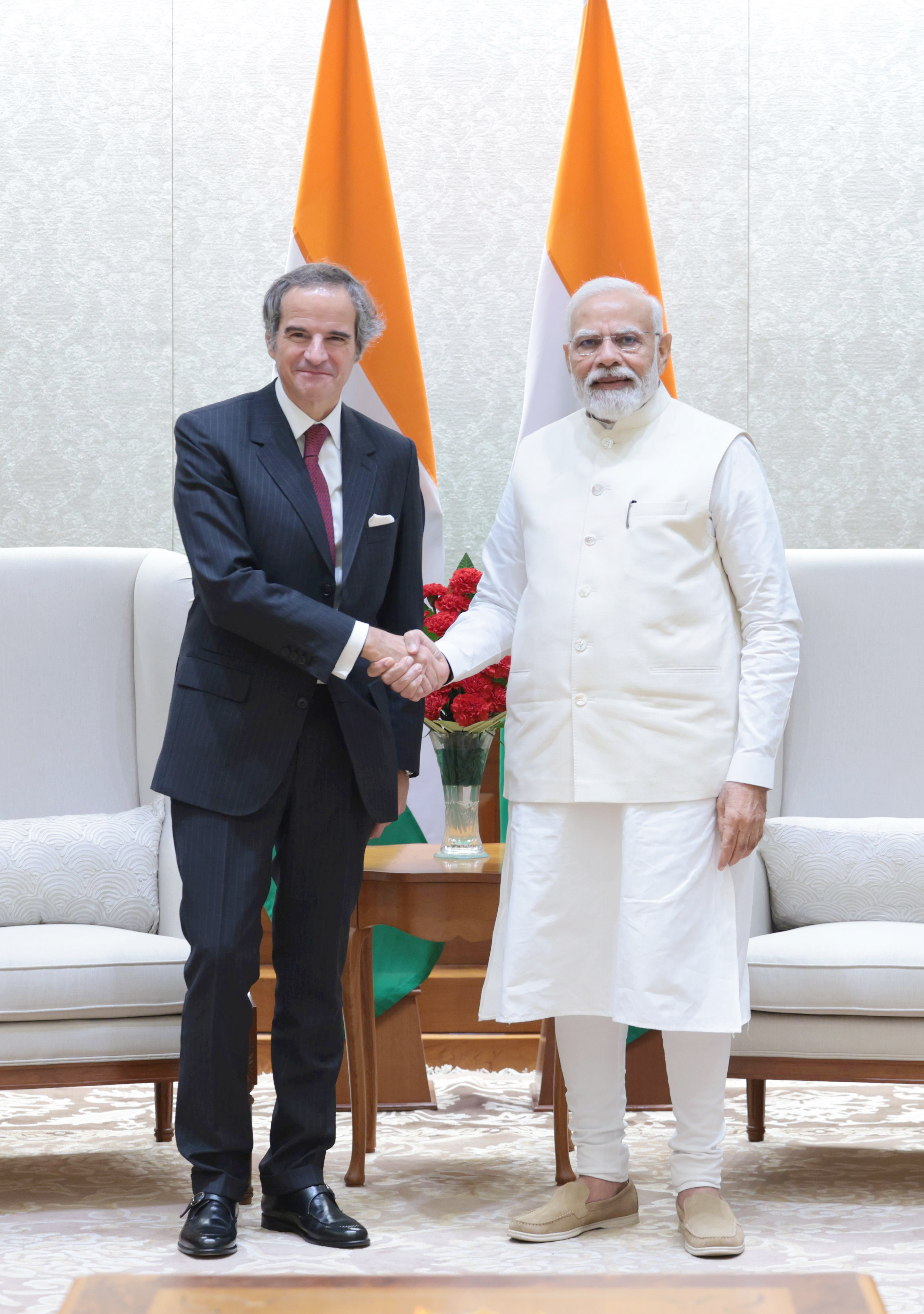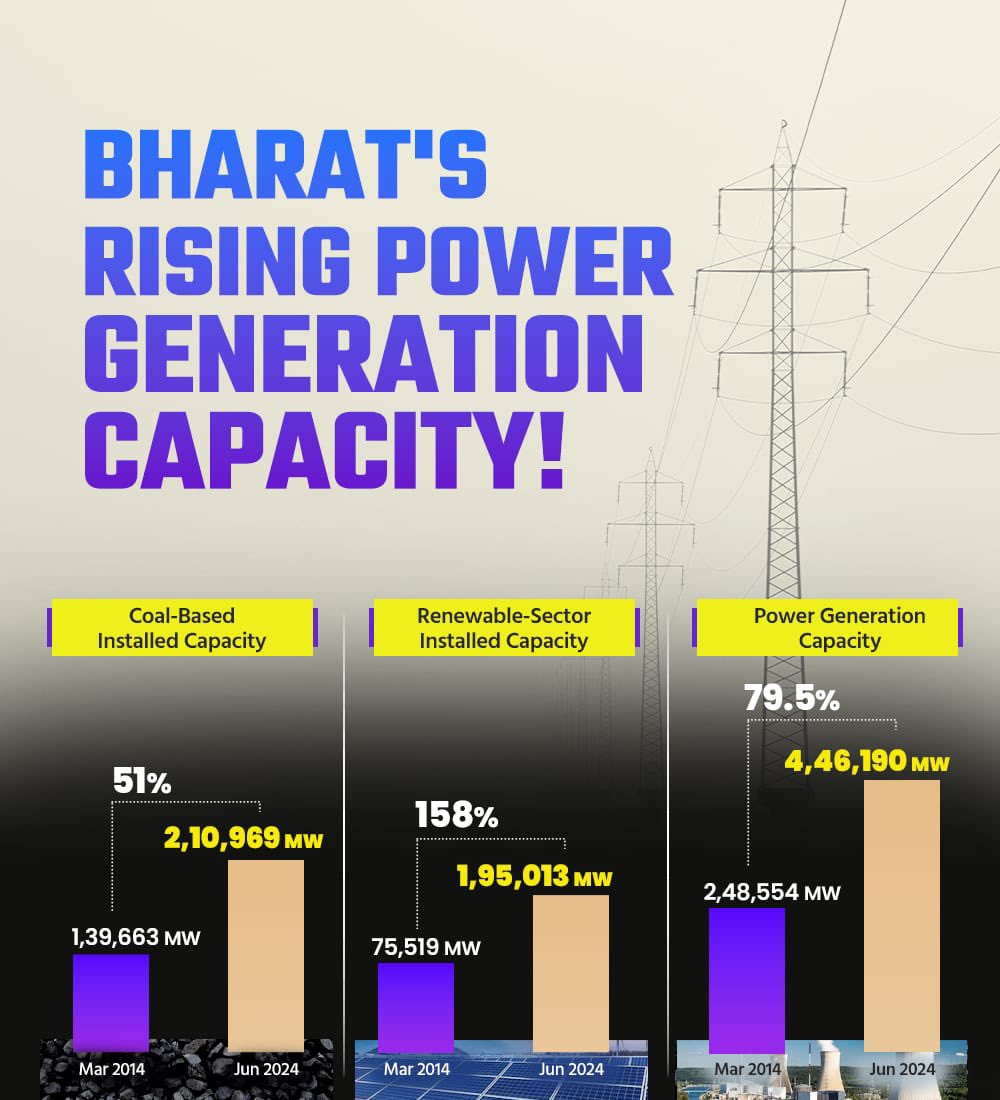The third unit of the indigenously developed 700-megawatt electric (MWe) nuclear power reactor at the Kakrapar Atomic Power Project (KAPP3) in Gujarat has commenced operations at full capacity.
Prime Minister Narendra Modi said on social media platform X, “India achieves another milestone. The largest indigenous 700 MWe Kakrapar Nuclear Power Plant Unit-3 in Gujarat starts operations at full capacity. Congratulations to our scientists and engineers.”
This comes a little over three years since the unit achieved its ‘first criticality’ – a technical term that signifies the initiation of a controlled, but sustained nuclear fission reaction – in July 2020. On June 30 this year, the unit had started commercial operations.
In India’s civilian nuclear programme, this is seen as a landmark event, given that KAPP-3 is the country’s first 700 MWe unit and the biggest indigenously developed variant of the Pressurised Heavy Water Reactor (PHWR). The PHWRs, which use natural uranium as fuel and heavy water as moderator, constitute the mainstay of India’s nuclear power fleet. Till now, the biggest reactor of indigenous design was the 540 MWe PHWR, two of which have been deployed in Tarapur, Maharashtra.
For India, the operationalisation of its first 700MWe reactor is a significant scale up in technology, both in terms of the optimisation of its PHWR design — the new 700MWe unit addresses the excess thermal margins (thermal margin refers to the extent to which the operating temperature of the reactor is below its maximum operating temperature) — and also marks an improvement in the economies-of-scale, without significant design changes to the 540 MWe reactor.
Four units of the 700MWe reactor are being constructed at Kakrapar (KAPP-3 and 4) and Rawatbhata (RAPS-7 and

site in Rajasthan currently. The 700MWe reactors are slated to be backbone of a new fleet of 12 reactors that the NDA government accorded administrative approval and financial sanction in 2017 and that are to be set up in fleet mode.
As India works to ramp up its existing nuclear power capacity of 7,480 MWe to 22,480 MWe by 2031, the 700MWe capacity would constitute the biggest component of this expansion plan. Currently, nuclear power capacity constitutes around 2 per cent of the total installed capacity of 4,17,668 MW (May 31).
Significantly, as India’s civilian nuclear sector gears up to its next frontier — building a 900 MWe Pressurised Water Reactors (PWRs) of indigenous design – the experience of executing the larger 700MWe reactor design would come in handy, especially with respect to the improved capability of making large-size pressure vessels, alongside India’s own isotope enrichment plants being developed to supply a part of the required enriched uranium fuel to power these new generation reactors over the next decade or so, according to DAE officials.
The first ‘pour of concrete’ for laying the foundation of KAPP-3 happened in November 2010 and this unit was originally expected to be commissioned in 2015. State-owned Nuclear Power Corporation of India Ltd (NPCIL), which operates the bulk of India’s nuclear power fleet, had awarded the reactor building contract of both KAPP Unit 3 and 4 to Larsen & Toubro at an original contract value of Rs 844 crore. The original cost of two 700 MWe units was pegged at Rs 11,500 crore and the tariff per unit was originally calculated at Rs 2.80 per unit (kWh) at 2010 prices (roughly a cost of about Rs 8 crore per MWe). The costing is expected to have seen some escalation, given the project delays.
The capital investment for these nuclear power projects is being funded with a debt-to-equity ratio of 70:30, with the equity part of NPCIL being funded from internal resources and through budgetary support.
In terms of safety features, the PHWR technology scores high, with the biggest advantage of the PHWR design being the use of thin walled pressure tubes instead of large pressure vessels used in pressure vessel type reactors. This results in a distribution of pressure boundaries to a large number of small diameter pressure tubes and thereby lowers the severity of the consequence of an accidental rupture of the pressure boundary than in a pressure vessel type reactor.
Additionally, the 700 MWe PHWR design has enhanced safety through dedicated ‘Passive Decay Heat Removal System’, which has the capability of removing decay heat (the heat released as a result of radioactive decay) from the reactor core without requiring any operator actions, on the lines of similar technology adopted for Generation III+ plants to negate the possibility of a Fukushima type accident that happened in Japan in 2011. The 700 MWe PHWR unit, like the one deployed in KAPP, is equipped with a steel-lined containment to reduce any leakages and a containment spray system to reduce the containment pressure in case of a loss of coolant accident.



